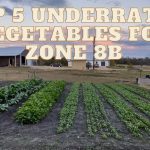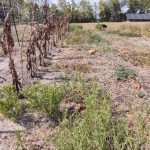The keys to success growing carrots in heavy clay soil is proper soil preperation (compost, broad forking, and hilling) and selecting the right carrot variety that can are adapted for dense soil. On Hatman Homestead, we used to struggle growing nice carrots in the stubborn clay soil on our land. The heavy soil would compact into concrete-like hardness or get waterlogged after rains. Needless to say, our carrot harvests were dismal for years until we discovered some simple solutions. With a little perseverance and TLC for preparing and planting the soil, now we enjoy thriving carrot crops from our homestead!
Getting the Soil Prepared for Planting
The first and most important step to success is preparing the clay properly before planting. Here are some effective techniques we use on Hatman Homestead:
Broad Forking the Soil
Running a broad fork deep into the dense clay helps break up those stubborn lower layers and improves drainage and aeration that carrots need to form those lovely long roots. I try to broad fork down 12-18 inches before each season’s planting if possible. Though labor-intensive, it has made a huge difference!
Adding Compost
We also make sure to work some high-quality compost into the clay soil – up to 25% compost mixed well into the existing dirt. I either dig this in by hand in smaller beds or run my tiller machine to thoroughly incorporate the compost in wider rows. Doing so lightens up the heavy clay and adds beneficial microbes and nutrients.
Hilling the Planting Beds
After amending the soil, I create raised rows or “hills” about 6-8 inches high to give the carrots the nice loose, deep soil they love. Then I sow the carrot seeds in double rows spaced 2-4 inches apart atop these hills.
When We Plant Carrots
Here in Zone 8 in the South, our clay soil can really bake rock hard in summer heat – definitely not ideal for growing carrots! We’ve found the best time for fall planting is mid-October. This allows the seeds time to sprout in still warm but cooling fall soil. Then the seedlings grow to full size through the mild winters and are ready for harvest around February before spring heat sets in again.
Starting the Carrot Seeds
The number one challenge folks have with carrots is the germination phase. Since carrot seeds can take up to 3 long weeks to sprout, they need consistent moisture and care to germinate well. I sow the tiny seeds just 1⁄4 inch deep. Then comes the tedious but essential task of watering gently twice per day (taking care not to wash seeds away in their delicate state). I know it’s frustrating waiting and wondering if any seeds will come up! But with sufficient, patient watering, the little sprouts do eventually emerge triumphantly. Once the seedlings are established, I can cut back to watering deeply just 1-2 times per week unless very dry spells occur.
Carrot Planting Density and Thinning
When planting my carrot seeds, I sprinkle them fairly thickly across shallow trenches without worrying about exact spacing. Planting densely means more carrots, but they’ll be smaller. For larger roots, I thin the bed once the seedlings are 2-3 inches tall. I thin again so the remaining carrots are 4 inches apart as they continue growing. This spacing lets them size up nicely in clay while maximizing the harvest. If you don’t care about large carrots, just leave them crowded for higher total yields.
Best Carrot Varieties for Heavy Soil
I learned early on that the typical long, skinny supermarket carrot varieties thrive best in loose, sandy loams and can struggle mightily in our clay dirt. Now I make sure to plant heavy-soil-friendly cultivars specifically bred to size up well and withstand the dense clay’s challenges.
Two carrot varieties that have been absolute winners for us are the hybrids Envy and Hercules:
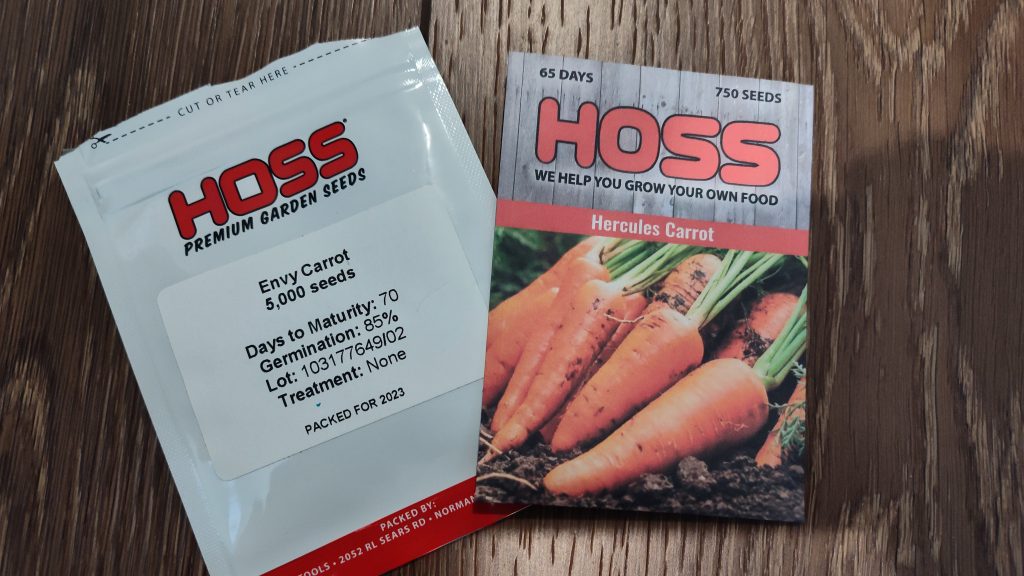
Envy Carrots
These beauties live up to their name, yielding enviably straight, smooth, sweet, crunchy orange roots. Even in the thick clay, Envy creates nicely tapering 6-8” carrots that rarely fork or stub. The flavor is superbly mild and sweet with that signature carrot taste we love.
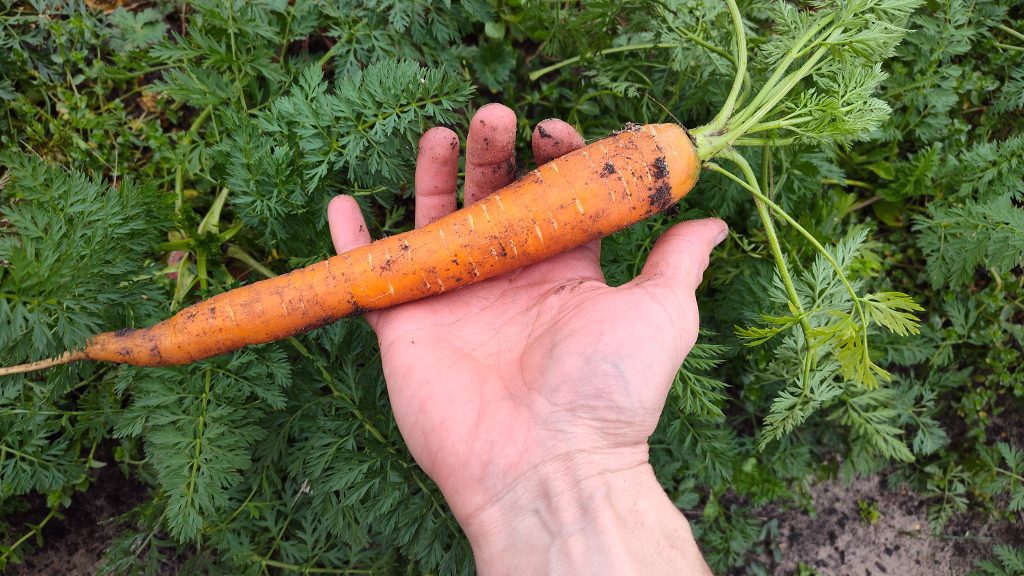
Hercules Carrots
As the name suggests, Hercules is one burly carrot, growing short and stout compared to traditional types. But the vigor and health of the stumpy carrots this variety produces in clay soil is just incredible. Hercules tolerates the soil density beautifully while other long-rooted types struggle. The taste has pleasant earthy notes with less sweetness than Envy. But they remain firm and crunchy well into spring harvests.
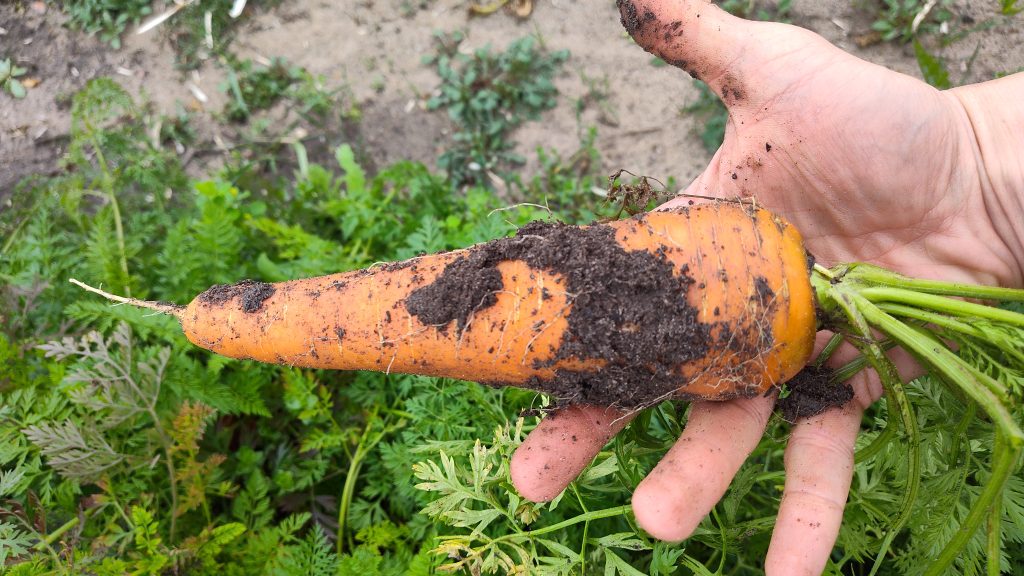
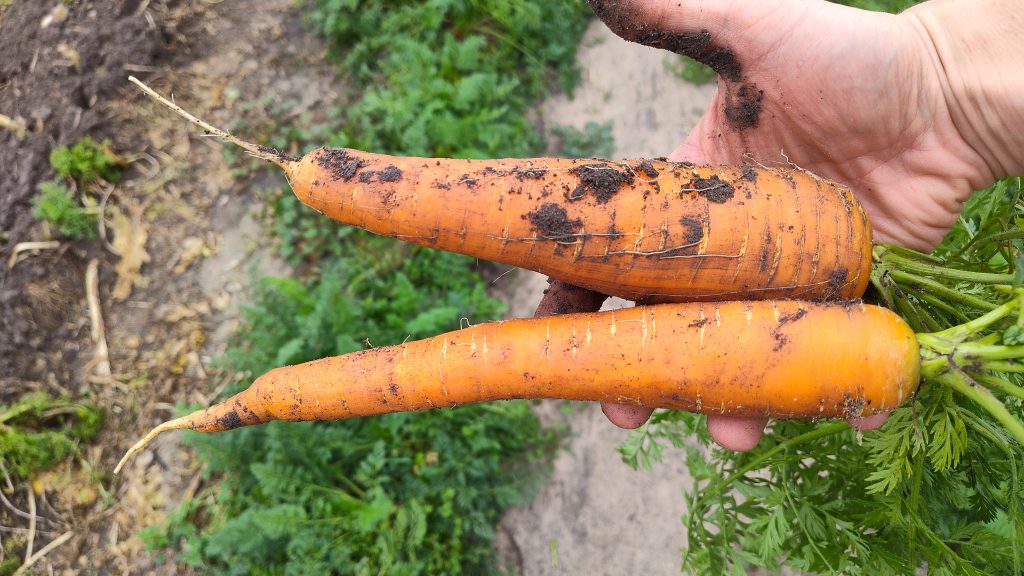
Other Pointers for Solid Carrot Crops
Here are a few other techniques we’ve picked up for getting the most from your homegrown carrot patch in stubborn clay ground:
- Build dedicated raised beds filled with amended garden soil if you have exceptionally thick, stubborn clay. Avoid compacting the loosened soil!
- Take great care not to oversaturate the soil, especially when seedlings are just getting established – clay simply doesn’t drain well.
- Side dress growing carrots with granular organic fertilizers or alfalfa meal for an extra nourishing boost.
- Spread straw, leaves or other breathable organic mulch around the base of carrot plants to retain moisture and keep soil cooler.
With patience and a little extra care taken at planting time to prepare the soil religiously, you really can overcome the notorious challenges of clay and grow sweet, crunchy homegrown carrots. Don’t hesitate to try it on your homestead this season! For even more tips and ideas for coaxing vegetables out of uncooperative dirt, explore my other articles here. Let me know in the comments how your heavy clay carrot crusade goes!



